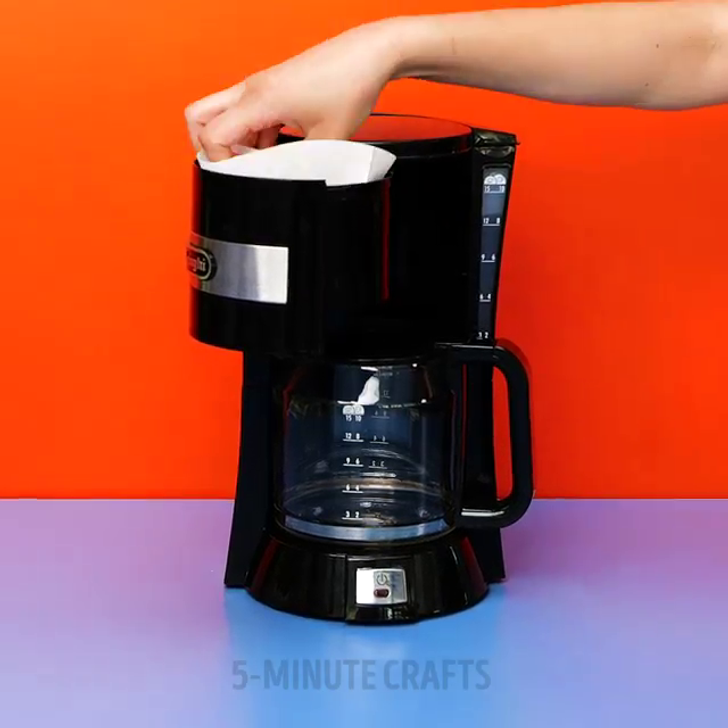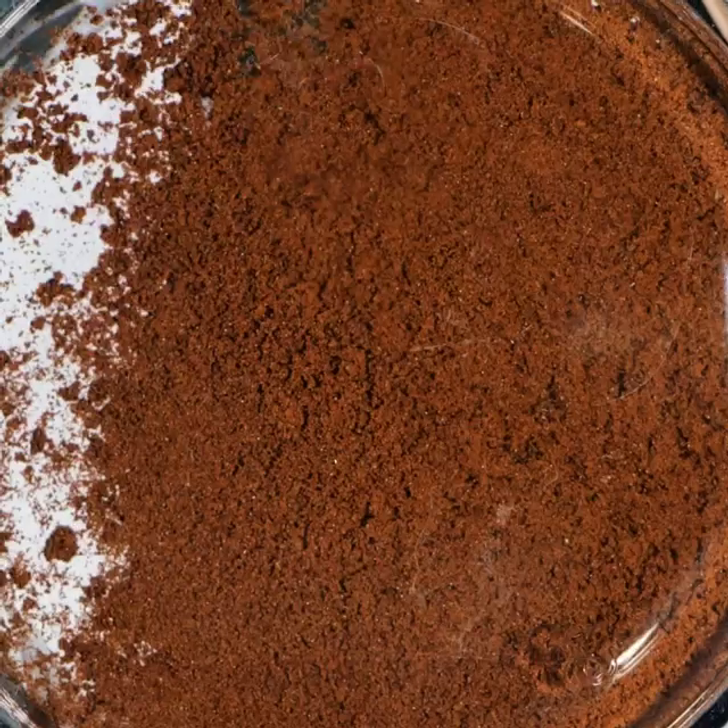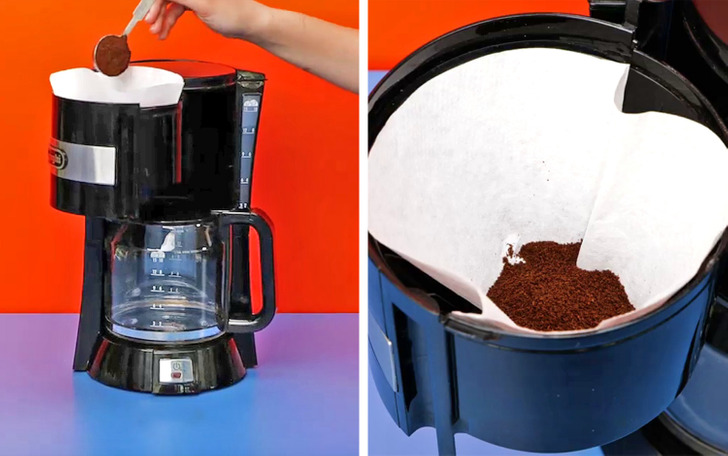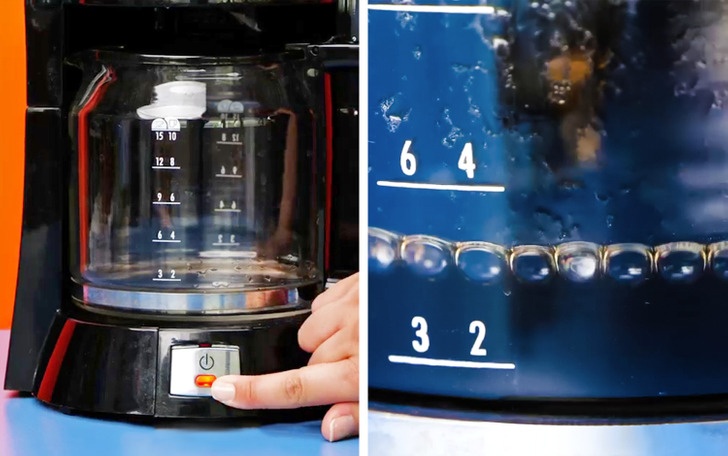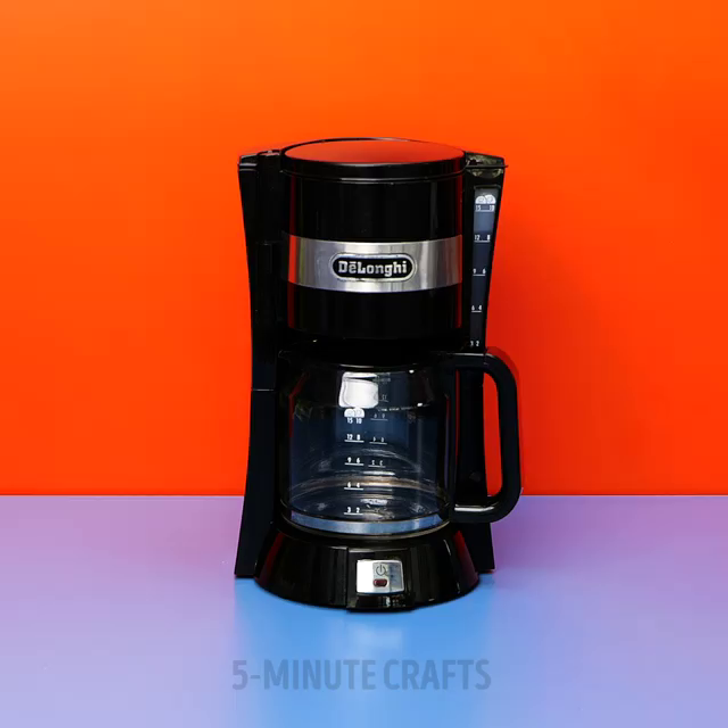How to Use a Coffee Maker
Millions of people around the world like to enjoy a cup of coffee early in the morning, but owning a coffee maker stands out as a convenient and cost-effective alternative to having to buy your coffee elsewhere.
5-Minute Crafts has prepared a simple guide for you to get more acquainted with the process of making your own coffee with a coffee maker.
❗ Important: This article covers the standard procedure of making an Americano in a drip coffee maker.
1. Pour water into the reservoir
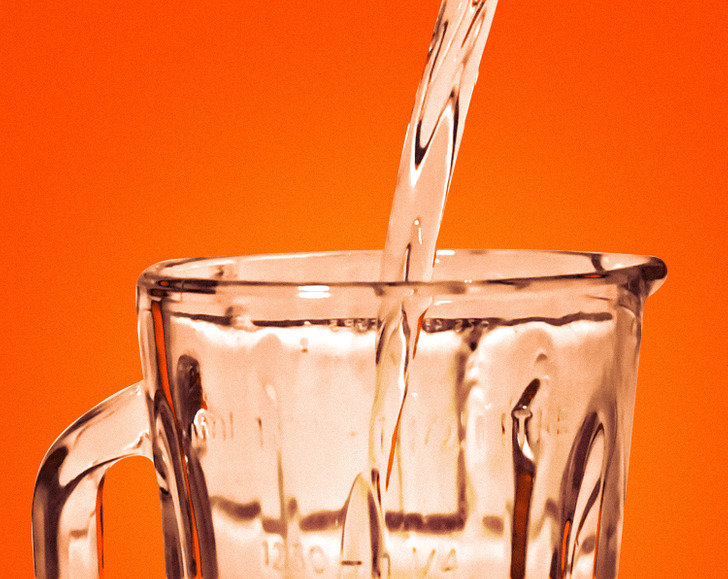
Often, the water reservoir has markings that will let you know how much water you have poured, but you can achieve a more accurate pour by weighing your water beforehand, since one milliliter of water will weigh one gram. You can either use tap or bottled water, but you should avoid using distilled water with your coffee maker, as some of the minerals found in tap or bottled water are actually necessary for the process.
An important thing to keep in mind is to know how much water you’ll need to pour—specialists suggest having a ratio of roughly 55 grams of coffee per liter of water for improved results.
2. Put the filter in the basket
If your coffee maker uses cone-shaped paper filters, you should fold the filter’s crimped edges that run along the bottom and one of the sides of the filter. Doing so will provide added support for your filter, allowing it to work more efficiently.
Some coffee makers can also use stainless-steel filters. These filters, aside from being reusable, will not capture any of the coffee’s natural oils, helping you achieve a fuller flavor as well as a heavier consistency for your brew.
3. Optional: Grind the coffee beans yourself
While it is not required, buying whole coffee beans and grinding them yourself will not only get you a fresher brew, but will also give you much more control over the flavor of the coffee. This step can be done with a coffee grinder, though some coffee makers come with a built-in coffee grinder as well.
As a general note, a coarser grind will result in a brew that is more watery and sour, whereas a finer grind will make your coffee taste more bitter. If you are not satisfied with the taste of your coffee, you are welcome to experiment with the grind of your coffee beans.
4. Add ground coffee to the filter
If you don’t have access to a coffee grinder, pre-ground coffee will work just as well. Be mindful, however, that one of the main reasons why freshly ground coffee is preferred is because coffee oxidizes and starts losing aroma and flavor after just a few days. In order to get better results from your pre-ground coffee, it is recommended to buy it in small quantities and store it safely, away from oxygen.
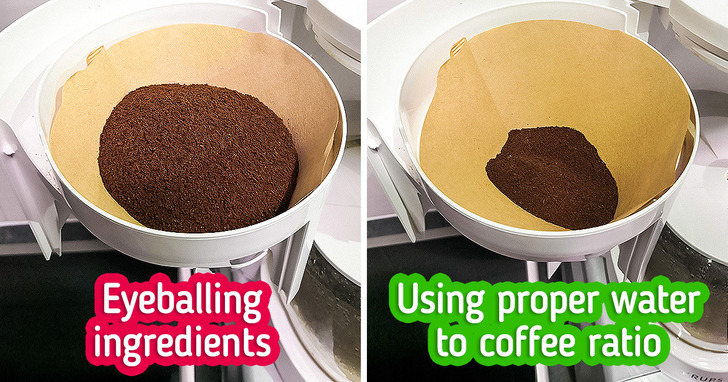
To put your coffee grounds into your coffee maker, simply load the filter and put it on the basket of the coffee maker. Don’t eyeball the amount of coffee you’re putting onto the filter and maintain the proper water-to-coffee ratio. If you’re making a single cup of coffee, load the filter with roughly 10 grams of ground coffee. You can slightly alter the ratio to your personal liking, but don’t go overboard.
5. Brew the coffee
Once you have loaded your coffee filter with coffee grounds, turn on your coffee maker and wait for the brew cycle to finish. The process typically lasts 3 to 5 minutes, and it will be complete once you notice that no more coffee is dripping into the carafe—the glass container that you can take out and serve coffee from.
It is recommended that you stir the carafe or jug where the coffee was poured in order to achieve a more consistent brew.
6. Pour the coffee into a cup

Once you have freshly brewed coffee, you can remove the carafe and serve it. If you don’t intend on drinking all the coffee you just made, many coffee makers feature a keep warm function or will have a hot plate that serves the same purpose. Keep in mind, however, that the longer that the pot stays on the hot plate, the more bitter your coffee will get.
7. Clean your coffee maker
After you’re done with brewing coffee, you can either dispose or clean the filter, depending on if you’re using a paper or a stainless-steel filter, respectively. It is also important to rinse both reusable filters and the carafe of your coffee maker, as leftover coffee can cause mold to grow.
